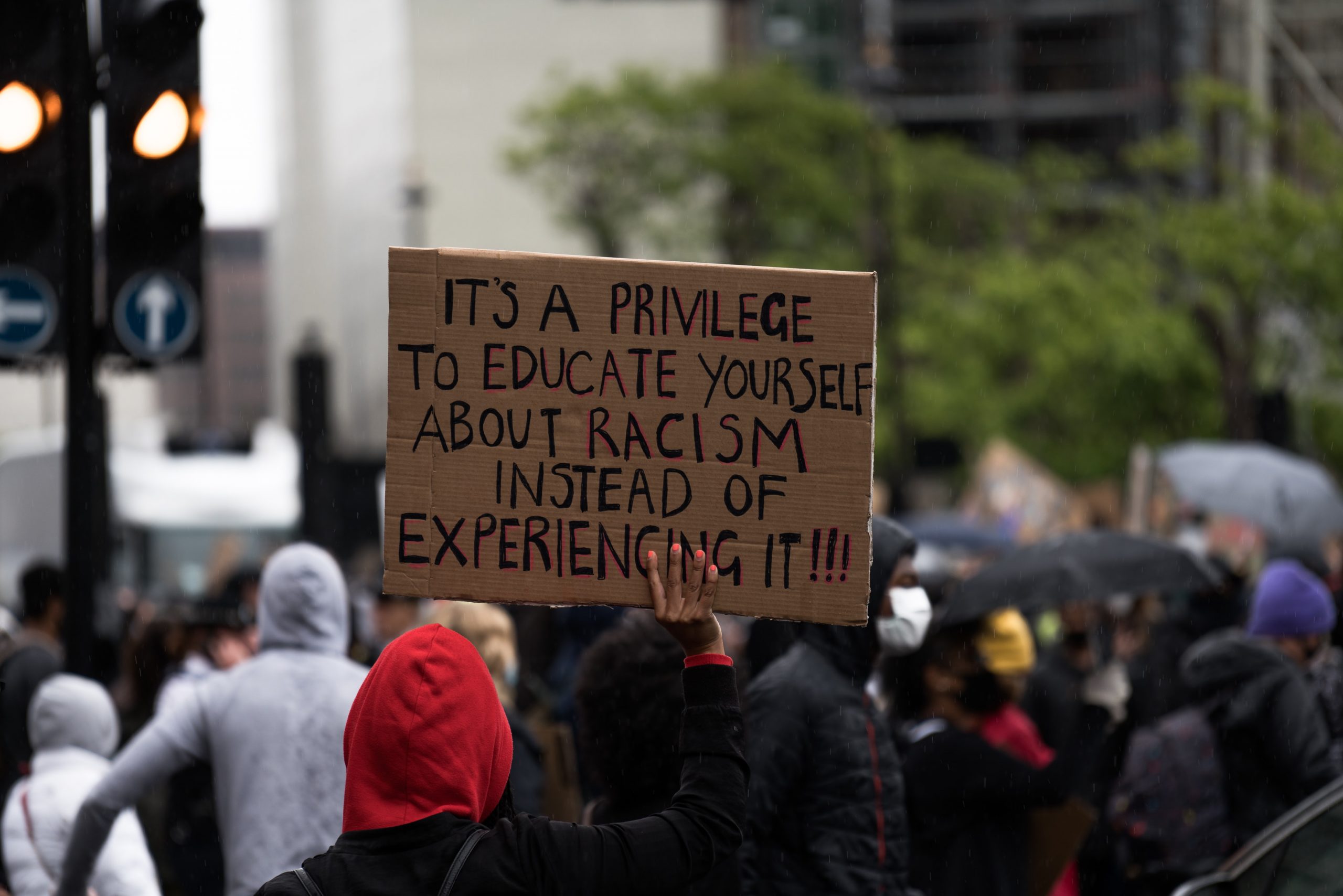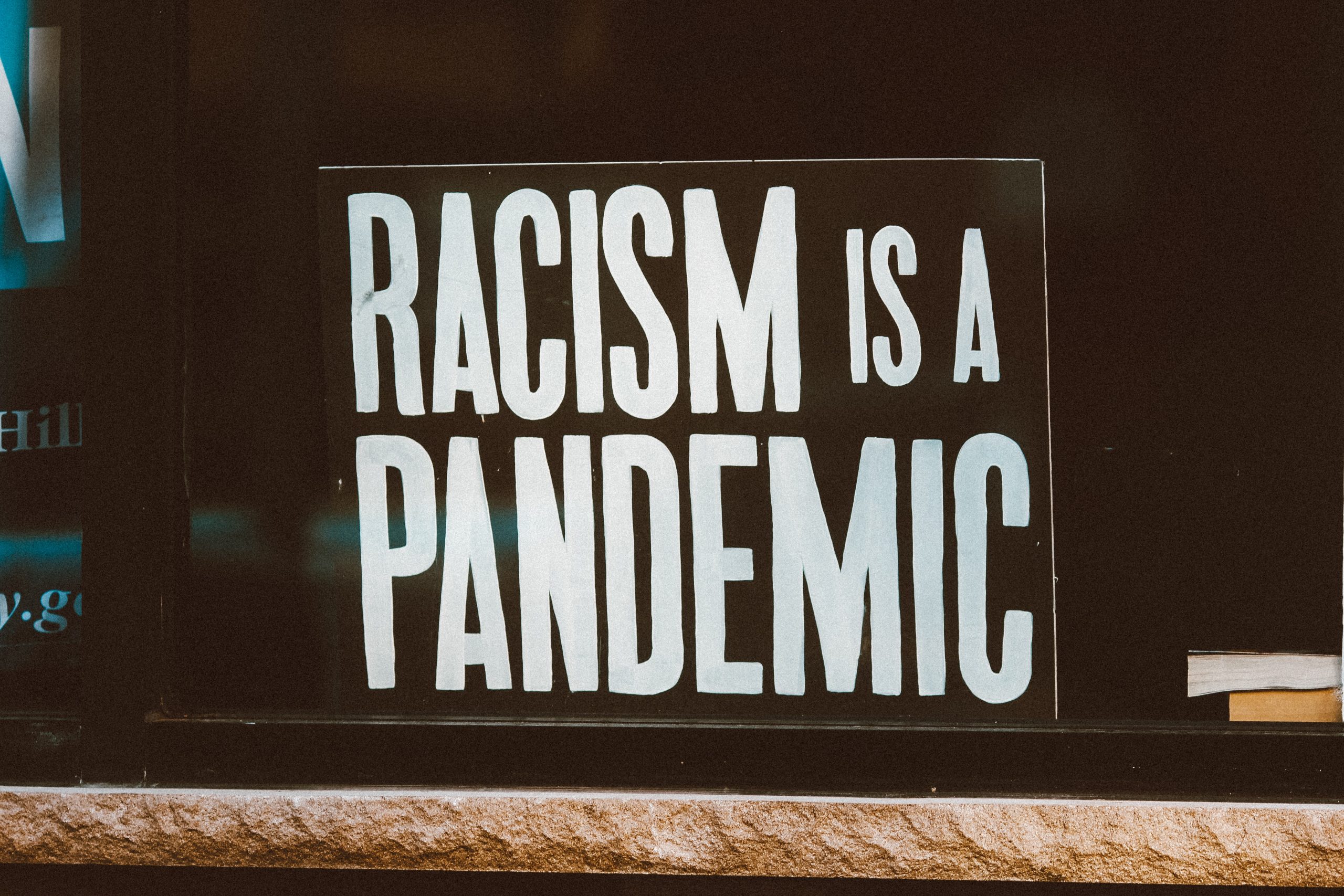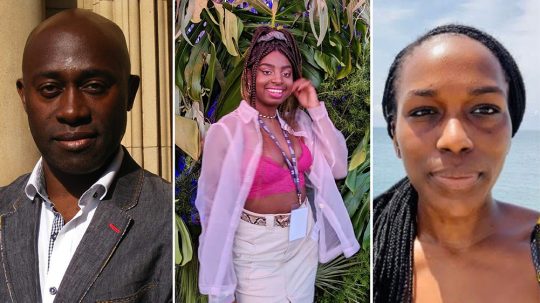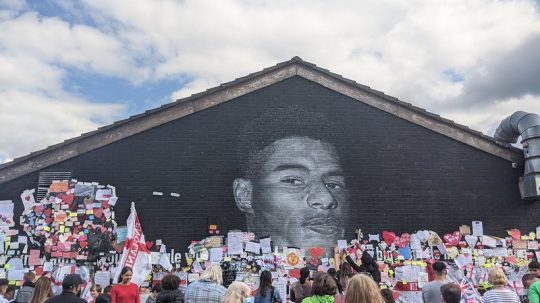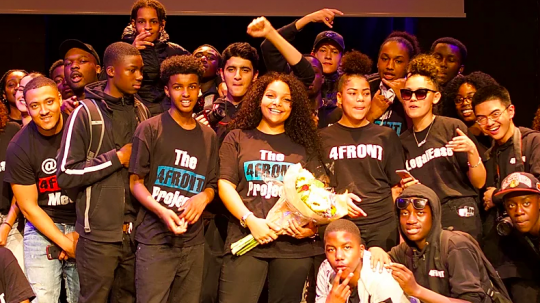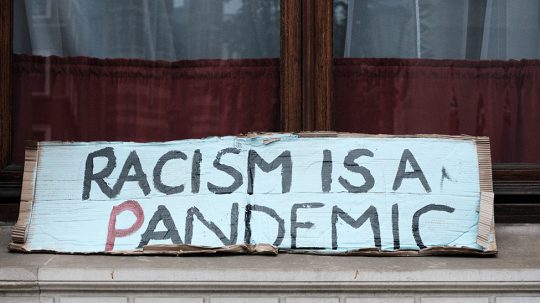In March, the then-chief executive of the Society of Editors (SoE) released a widely criticised statement claiming racism was never a factor in the coverage of Meghan Markle – a statement which the new chief exec has just withdrawn. So, what is the state of racism in the media?
The SoE’s statement, written by its chief executive at the time, Ian Murray, asserted that Meghan Markle’s allegations that parts of the UK media were racist was “not acceptable”, and that her claims were made without supporting evidence. He also said that the UK media “has a proud record of calling out racism”.
In response, more than 160 publishers, editors and journalists of colour penned an open letter stating that the SoE’s statement was “laughable” proof of “an institution and industry in denial”. Editors of the Huffington Post UK, Guardian and Financial Times also refuted Murray’s statement. With a recent study showing that 92% of journalists are white, the endurance of racism in the media should come as no surprise.
While the public retains autonomy, the malleability of our minds, attitudes and opinions makes for highly consequential words and headlines
Article 14 of the Human Rights Act and the Equality Act 2010 may both be designed to shield against discrimination but, in practice, prejudice lives on throughout society, including the media.
The SoE’s new chief executive, Dawn Alford, has formally withdrawn the statement, saying that Murray’s comments did not “reflect the complex, challenging and changing processes that all society — including the media — is experiencing”.
How does racism appear in the media?

Credit: Markus Spiske / Unsplash
The classic comparison of racism between the UK and US suggests that racism in this part of the world is more subtle, coded and insidious. It is wrapped up in everything, making it harder to identify, let alone eradicate.
Meghan Markle’s treatment by the tabloid press highlighted the endurance of racist attitudes in newsrooms. Throughout her first pregnancy, Markle faced extreme criticism of her every move. In contrast, Kate Middleton was praised for similar behaviour during her pregnancies.
It is purposefully subtle, to the point where you look like you’re making a fuss if you call out every choice of photo, language, choice of guests, subject matter and more
Research released in May showed that the media also treats Black footballers differently from white players. Reviewing commentary during the FIFA World Cup in 2018, the study showed that the majority of praise aimed at Black players centred on perceived physical prowess and natural athleticism, whereas white players were more likely to be complimented on intelligence and character.
“The media wields a lot of power in the shaping of opinions and narratives. While the public retains autonomy, the malleability of our minds, attitudes and opinions makes for highly consequential words and headlines,” said Kimmy Soko, founder of Dope Black Disabled. “One writer’s use of casual hyperbole can be the difference between one’s safety and lack thereof. Coded racist language and dehumanising pictures can be the theme of widespread microaggressions and blatant racism, the fuel for a smoldering narrative to turn into an inextinguishable fire leading to the demise, discomfort and displacement of many.”
As racism is often only labelled as such when undeniably blatant, its appearance in the media is sometimes difficult to track, because it is often written between the lines and formed in the perpetuation of stereotypes.
“It is purposefully subtle, to the point where you look like you’re making a fuss if you call out every choice of photo, language, choice of guests, subject matter and more,” said Mary Mandefield, a radio presenter and creative producer. “It doesn’t feel like every day there is a vicious viewpoint in the papers, online or on social media but it’s definitely there and is the type that chips away at you day by day.”
Media racism also crops up in misleading headlines and in mislabelling of photos of people from ethnic minority groups. For example, Little Mix bandmates Leigh-Anne Pinnock, whose parents are both mixed race and who has Barbadian and Jamaican ancestry, and Jade Thirlwall, who is a quarter Yemeni and a quarter Egyptian, are frequently mixed up by photo editors.
What impact does denial have?
When the SoE released their statement denying racism and the government published a report refuting the existence of systemic racism in the UK, the outrage was palpable. Both gave credence to those who allege that racism is a thing of the past.
Racism lives on, however, as evidenced by, for example, disproportionate stop-and-searches for ethnic minority groups, continual reports of racially motivated crime and the racist treatment of Black footballers during Euro 2020.
“There is nothing more frustrating than outlets and individuals spending more time and energy on denying racism, rather than actually working towards doing better in the future,” said Mandefield. “The more it’s denied, the more it silences the voices of those negatively affected by it. Because it can be so subtle, it often goes unnoticed to those who haven’t experienced racism before, therefore leaving it to others to do the work of calling it out and offering solutions to do better.”
Continuing to deny the existence of racism feeds bigoted attitudes and ensures racial stereotypes go unchallenged in the press.
“Industry denials of media racism are indicative of press executives’ broader attitudes to racism and to being scrutinised: a failure to understand and address wrongdoing,” said Sara Badawi, head of communications and partnerships at Hacked Off. “Fundamentally, it showed that these executives will not change on their own — that is why regulation is so important, as a backstop against racially discriminatory content being published.”
How does racism in the media impact day-to-day life?
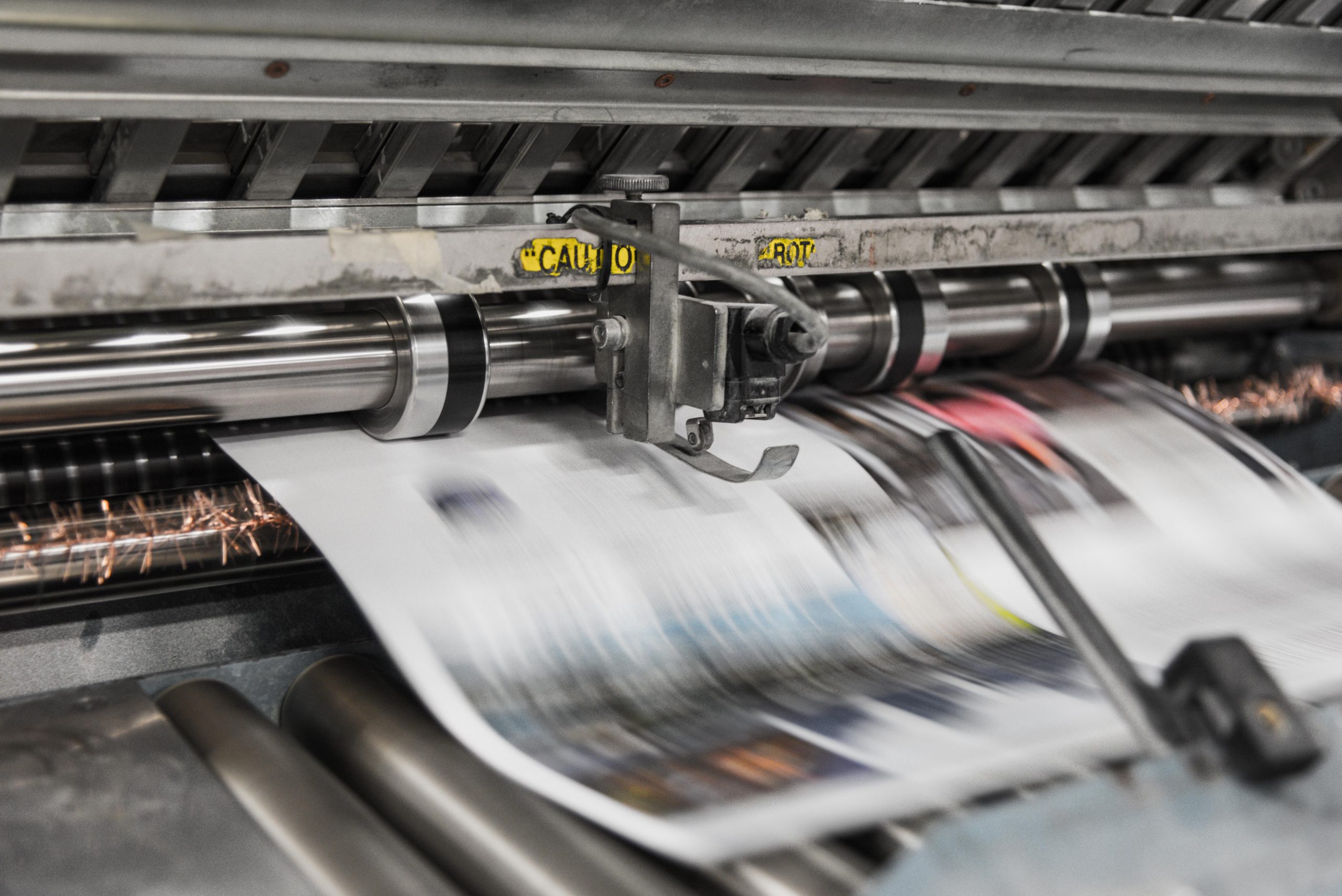
Credit: Bank Phrom / Unsplash
While racism is left unchecked in the media, it will keep being echoed in day-to-day life. People learn about the world through the news and if the press perpetuates stereotypes, misrepresents ethnic minority groups and mislabels celebrities because they fail to do their due diligence, people in real life will mirror or emulate these behaviours — and see nothing wrong with it.
“It’s very deep-rooted, to the point where many people don’t even realise they have changed their behaviour as an effect of what they’ve consumed in the media,” explained Mandefield. “Young Black boys and girls are conditioned from very early on to be conscious of being labelled as ‘too loud’ or ‘aggressive’. We’ve seen how the media have painted Black men and women in this light in the past, from footballers to popstars.”
Additionally, the media often focuses its attention disproportionately on the experiences of white people. This can manifest in the exclusion of case studies from ethnic minority groups in features and in neglecting to consider how race intersects with how all people are treated.
Mandefield continued: “Aside from the common stereotypes, there are more subtle ways that people don’t see themselves represented in the media, from always being seen as the charity case to only focusing on stories about Black people when they involve trauma and hardships.”
Why does racism in the media endure?

Credit: Rolande PG / Unsplash
Simply put, racism in the media continues to endure because it goes unchallenged far too often. Society has made significant strides in including the stories of ethnic minority groups in the media, but there is still insufficient oversight.
“Press racism is possible because the largest papers belong to a complaints body called the Independent Press Standards Organisation (IPSO) – an industry-controlled complaints-handler which fails to regulate media racism effectively,” said Badawi. “For example, IPSO has to use a code written by newspaper editors which permits racism and other forms of discrimination, provided it is directed at a group, and not an indvidual.”
Clause 12 of the Editor’s Code, the only clause that addresses discrimination, states: “The press must avoid prejudicial or pejorative reference to an individual’s race, colour, religion, sex, gender identity, sexual orientation or to any physical or mental illness or disability. Details of an individual’s race, colour, religion, gender identity, sexual orientation, physical or mental illness or disability must be avoided unless genuinely relevant to the story.”
In 2018, a parliamentary select committee looked into discrimination complaints submitted to IPSO. Over a period of one year, the committee found that the body received 8,148 complaints from the public about discrimination and upheld just one.
“IPSO’s ineffectiveness in dealing with accuracy complaints also means that newspaper inaccuracies which have a racist effect are not properly sanctioned, and subsequently that such inaccuracies are not disincentivised,” continued Badawi. “The lack of independent press regulation means that where bigoted attitudes in newsrooms exist, there is no regulatory protection for the public from the expression of those attitudes in reporting.”
How can we stop discrimination in the UK media?

Credit: Absolutvision / Unsplash
Diverse newsrooms need to be at the forefront of eradicating racism in the media. Without authentic representation from ethnic minority groups, little will change.
There also needs to be an active effort to listen to the ethnic minority groups who are already there. A single anti-racism course in the wake of Black Lives Matter is not enough to counteract centuries of systemic racism.
“The Black community has done so much to speak up about racism in the media, but there needs to be a follow-through from the people who aren’t directly affected by racism,” said Mandefield. “When people claim to be allies, they rarely put their names and reputations on the line or speak up against seemingly smaller and more subtle acts of racism in the media.”
Allies must play an important role in combating racism in the media. By calling out racism, being careful not to speak over voices from ethnic minority groups and using their privilege to highlight the gaps in the industry, allies can help modernise the industry too.
“Independent regulation is the first step to ensure the public are protected from the worst effects of press racism,” added Badawi. “The IPSO regime, which permits group discrimination and which uses a code written by a committee which is entirely white, is plainly not capable of dealing with press racism. From there, greater newsroom diversity and other initiatives are important to encourage cultural change.”

